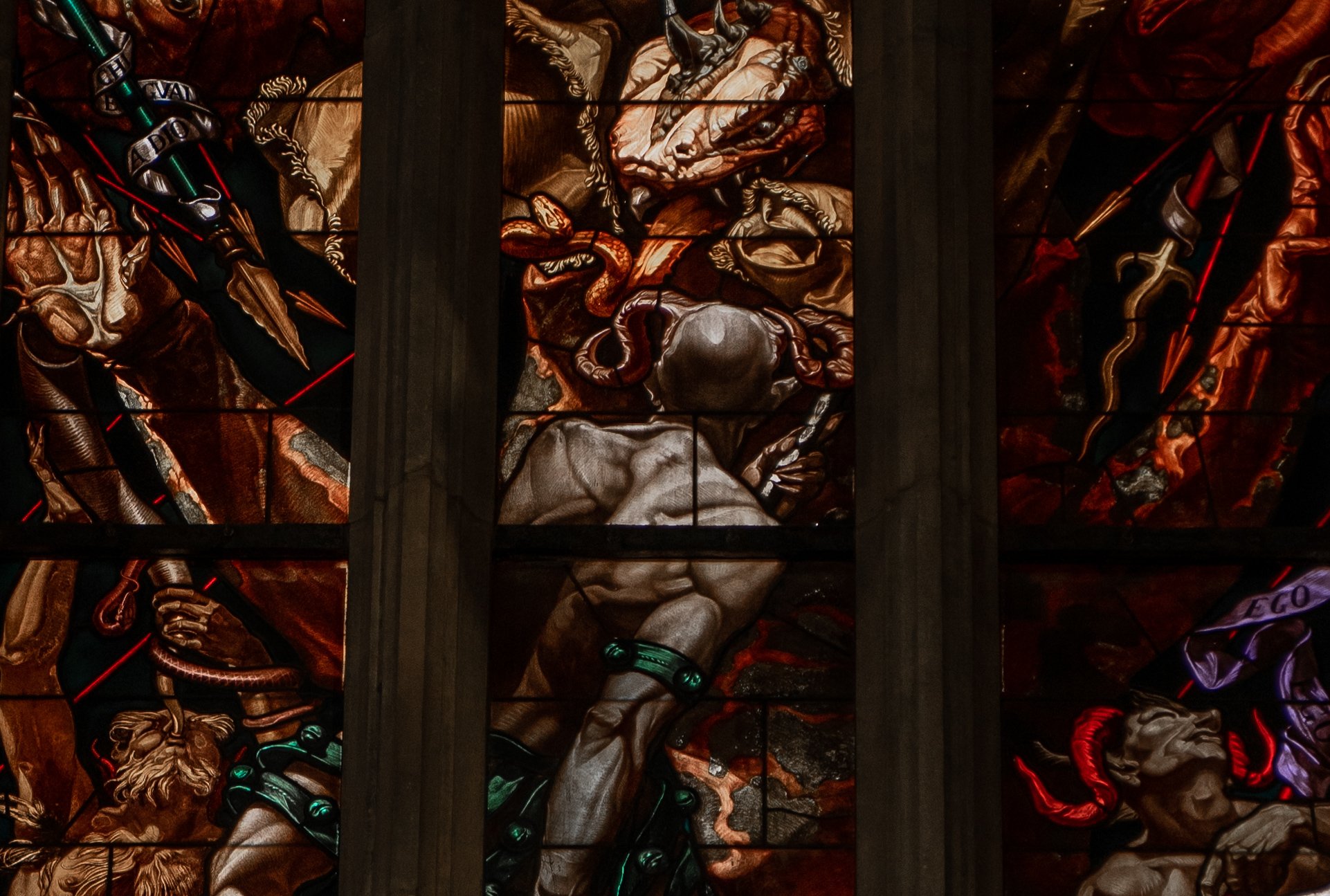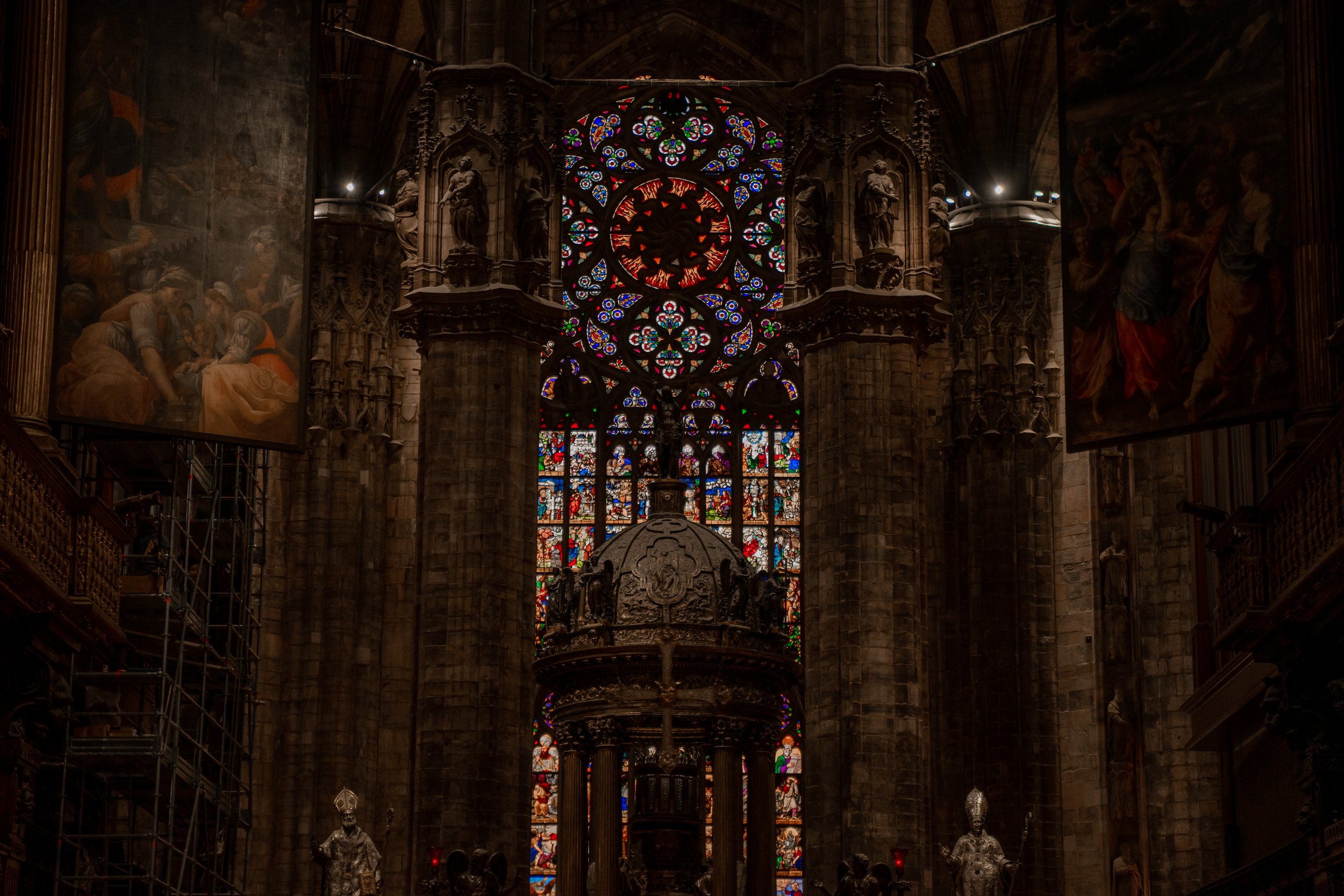Duomo di Milano






A true Gothic masterpiece and artistic revolution, the architecture and artworks of Milan’s Duomo are simply awe-inspiring! The cathedral dates back to the 1300’s and is the fifth largest cathedral in the world, taking more than six centuries to complete. Standing within the medieval Piazza, looking up at the Duomo, you can’t help but be captivated by its design and grandeur.
Firstly, I’d encourage you to take a walk around the outside of the cathedral to admire the Gothic tracery, unusual carvings and stained-glass windows. The frontage of the church is filled with unique artworks including snakes, mythological creatures and historic figures. If you stand in front of the church’s main doors and look slightly to your right, you will discover one of the most curious pieces which is thought to depict the legendary dragon-like creature ‘Tarantasio’. It is said that during the 12th century a vast lake existed in the Lowlands of Lombardy where this malevolent beast existed. The region lived in fear of the dragon until after a series of heavy rainstorms a gigantic bone surfaced in the waters, which was believed to be the animal’s remains. However, the legend of ‘Tarantasio’ lives on marking the end of an era of terror for the Milanese people.
Once you have admired the cathedral’s external beauty head inside to see its mesmerising Gothic details and history. I was instantly in awe of the scale and elegance of the stained-glass windows including 100’s of meticulously created scenes which were designed to complement the architecture of the cathedral. The windows use rich colour palettes, intricate figural representations and a contrasting focus on light and dark for dramatic effect. The Duomo contains 55 magnificent stained-glass pieces, but I would highly recommend taking some extra time to view the window entitled “The Fight between St. Michael and the Demons” which is located along the northern wall. The thematic elements include depictions of good and evil in a duel, showing Archangel Michael fighting against the demons. If you look closely, you will see the snakes, devils and dark creatures, which feature in this phenomenal piece of art.
Towards the back of the cathedral, you will discover Saint Bartholomew Flayed', a morbid statue depicting one of the twelve apostles of Jesus who endured a brutal martyrdom when he was said to have been skinned alive and beheaded. Sources say that the saint endured this demise in Greater Armenia after converting their king to Christianity. The historic sculpture was created by renaissance artist Marco d’Agrate in 1562 and is a fantastic example of macabre art.
If you have time, I would also recommend visiting the crypt under the high altar. Here you will discover the rare beauty of the Jemale Chapel, which was designed by Pellegrino Pellegrini in the 16th century. Plus, the spectacular final resting place of Saint Charles Borromeo's at the opposite side.
Another area situated underneath the cathedral which can be visited is the Archaeological site that contains the remains of the Christian Baptistery of St. John and the Basilica of Santa Tecla as well as a former graveyard.
To complete your visit head up to the magnificent rooftop where you can walk through the terraces and get a close-up perspective of the cathedral’s gargoyles, marble statues and soaring design. The main spire known as the ‘Tiburio’, is 108m in height and includes a golden ‘Madonnina’ which is thought to radiate hope, glory and salvation across the city. Make sure to look out for the intricate tracery on the pointed arches on the roof, which I found especially interesting with each one showcasing a different style of carving including: demons, snakes and dragons. You can access the terrace via a 251-step stairway, but personally I would recommend taking the lift to the top and then walking back down!
Tips:
In terms of tickets there’s lots of different options but it you want to do everything I’ve mentioned I’d recommend purchasing the ‘Fast track pass with terraces by lift’ which you can buy from the Duomo website here
Please note that appropriate dress is required to enter and shoulders and knees must be covered
There is limited access to the cathedral on Sunday mornings due to religious services taking place
Address: P.za del Duomo, 20122 Milano
